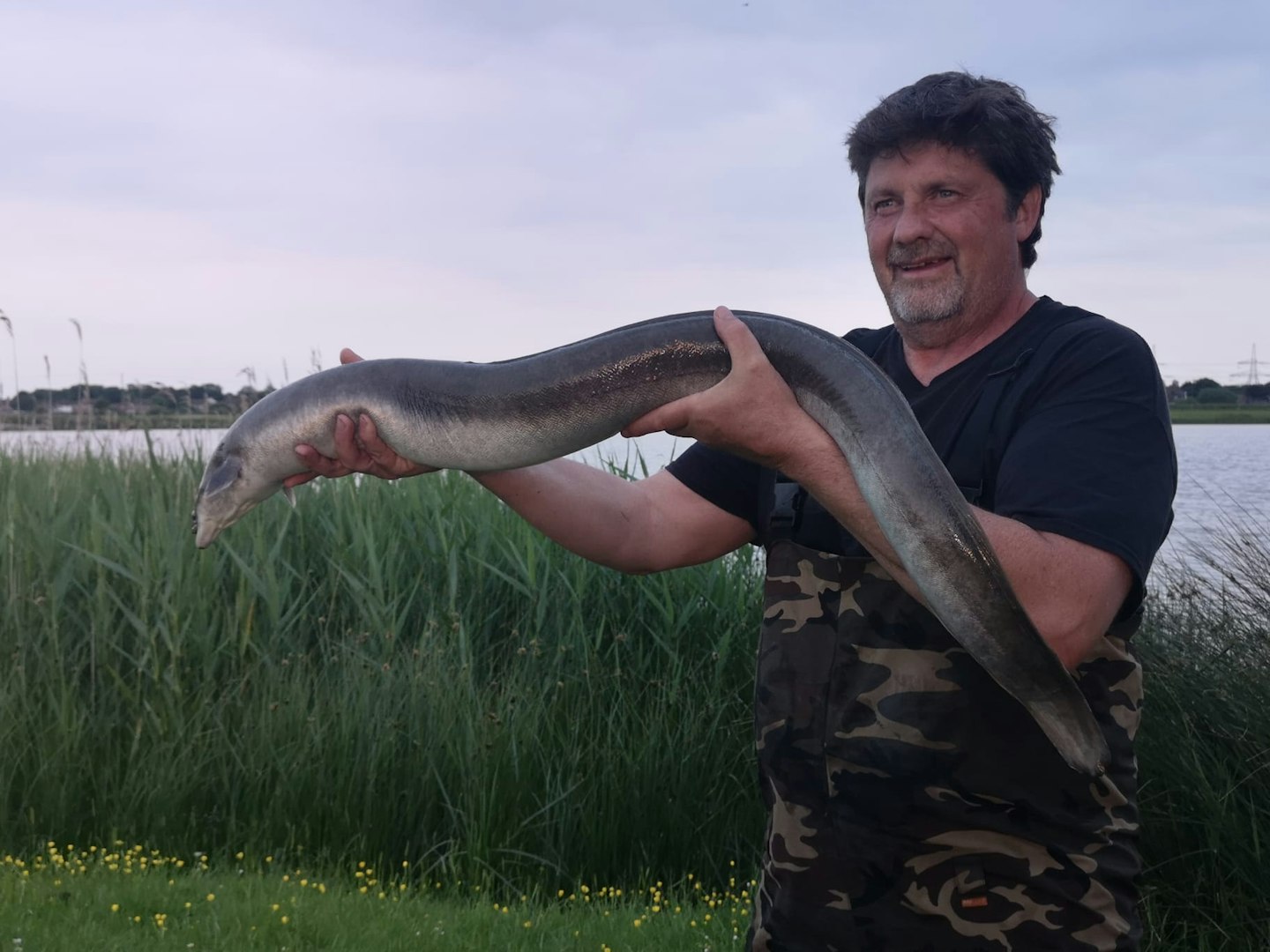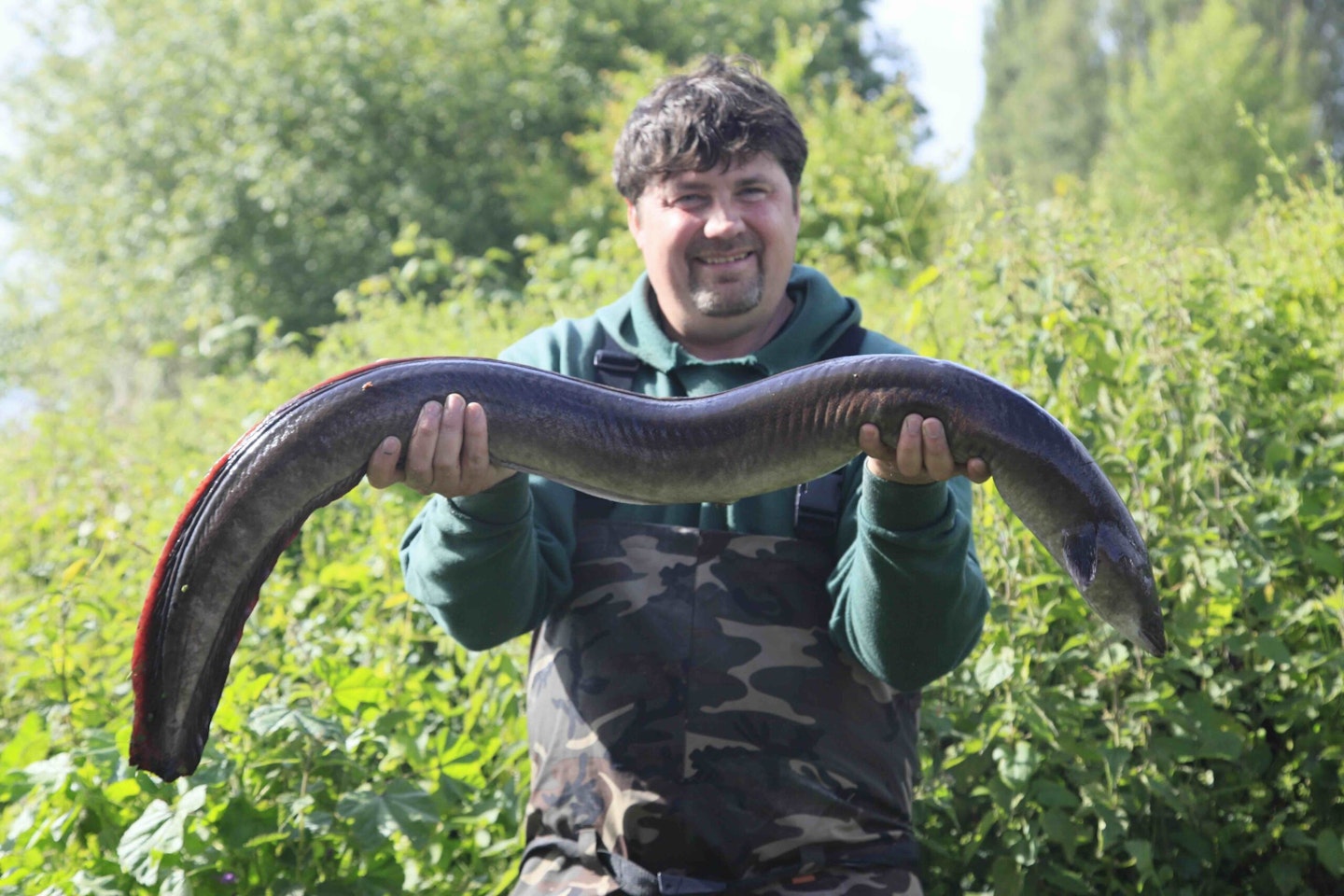Britain's longest- standing record for a coarse species was beaten last week following the capture of a remarkable 11lb 3oz eel.
It was landed from a southern gravel pit by species fanatic Steve Ricketts, who said he was ‘close to finding religion’ when he saw the incredible fish surface. It measured 47 inches long, with a staggering 12-inch girth.
STAY COMFORTABLE ON LONGER SESSIONS BY USING ONE OF THE BEST FISHING BEDCHAIRS.

Although he was targeting eels by design, Steve tempted the huge eel using a bait more usually associated with carp fishing – a pellet!
“The pits I usually fish for eels in the Colne Valley were ruined by the creation of the HS2 railway, so I joined a southern gravel pit which holds plenty of good-sized eels, and have just been enjoying my fishing ,” he said.
“This water is also home to plenty of carp, and the guys targeting them often feed beds of pellets and fish a boilie over the top. I’ve found that, when fishing deadbaits and worms on there, you get pestered by ‘bootlace eel the bigger fish seem to be preoccupied with pellets.”
Steve's had great results using 16mm halibuts, landing eels over 5lb on every trip he’s made to the venue.
“On this session, I’d landed two four-pounders plus a ‘six’, before I had a bite just after 7.30pm,” Steve continued.
“I’d actually set my camera up to record the run, and hooked a fish that took line to begin with. It was quite calm after that, and I didn’t think it was all that big initially.
“But when I saw it surface, I shouted out in shock. My net has three-foot arms, and with the fish’s head at the spreader block, a load of its body was still hanging out the back!”
USING THE BEST BITE ALARMS WILL HELP YOU IDENTIFY EVEN THE MOST SENSITIVE OF BITES.

After folding the fish into the mesh, Steve weighed it on his digital scales which initially gave a weight of 11lb 5oz.
“I couldn’t believe that, so got out my Salter match scales, which are very sensitive. They gave a reading
of 11lb 3oz. I then called a few witnesses, including National Anguilla Club Records Officer, Tony Kellner.”
“I’ve spent years on rock-hard, secret pits, chopping down reeds and cutting back trees in search of fish like this. This place, with its nice grassy banks and platforms, is the last water I expected to catch such a fish from, as it goes against everything we know about big eels,” he said.
“We believed that fish only become truly big in low-stock venues, which is why me and other anglers that target big ones by design spend so much time on challenging waters. But there are lots of smaller ones in this venue.”
Theories have been aired regarding the fish’s age, with some reckoning it to be over 100-years-old, but Steve thinks that can't be the case.
“This pit is only 40 years old. Where this fish has come from, I don’t know. It’s as if it is on steroids, growing fat over the years by hoovering up piles of carp anglers’ pellets. It had the head of a five-pounder!”
Rig-wise, Steve used a six-inch hooklink of 45lb Quicksilver, 30lb braided mainline and a 3.5oz lead fished on a running rig.
“I fish this tight to the Baitrunner, so that any taking fish is hooked against the reel,” he said.
“A heavy lead is key to the set-up, as you don’t want it to move when a fish picks up the bait. With this rig, 95% of the eels I catch are hooked in the bottom lip.”
THE BEST FISHING BIVVIES WILL KEEP YOU DRY WHEN OUT FISHING FOR PROLONGED PERIODS.

This page is a free example of the amazing content Angling Times Members get every single week. Becoming an Angling Times Member gives you access to award-winning magazine content, member rewards, our back issue archives, bonus content and more! Join our fishing community and find out more today!
